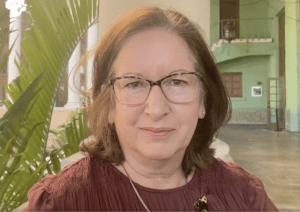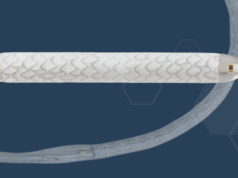
The development of medical devices in the vascular space faces increasing challenges amid moves afoot at the Food and Drug Administration (FDA), according to a leading regulatory expert in the field.
Among the developmental vehicles currently caught in the crosshairs are physician-sponsored investigational device exemption (PS-IDE) studies, Dorothy Abel, the former FDA official responsible for leading evaluation of vascular and endovascular surgery devices, recently told the 2023 Critical Issues America (CIA) annual meeting (Feb. 10–11) in Miami.
She was giving the CIA keynote address, tackling the subject of endovascular grafts across the decades, their evolution and what lies in store for device development down the road.
Throughout, Abel, currently vice president of regulatory strategy at medical device research organization NAMSA, emphasized the importance of collaboration during the process of shepherding new products toward commercialization.
Developers should work together across the spectrum of interested parties—manufacturers, testing facilities, regulatory agencies—to establish the best bench-testing and animal study protocols, and what needs to be gleaned from the clinical setting, to get to requirements centered on a risk-based rationale for testing, she said.
This might entail looking at “what does the device need to be able to do; what can go wrong if it does not do that, what type of testing do we need to help us believe that it is going to do what it is supposed to do,” explained Abel, who cofounded the FDA’s early feasibility studies program.
She contrasted the difference in standards between what is required in the European Union (EU) and the U.S. “In the U.S., it is kind of a guidance—it helps FDA understand what should be done,” Abel said. “But in the EU, they take it very seriously,” she added. “If it is written in a standard as something that needs to be done, you are going to have to do it in order to get the device to market.”
Abel posed the overarching question—“Is the future now?”—of the medical device development landscape, answering herself: “I am kind of hoping that it is not.” Her reasoning? Those challenges that potentially limit PS-IDEs.
“The FDA has recently shut down the opportunity for doing some sponsor-investigator IDEs,” Abel said. “We do not know yet what their thinking is; whether that is going to apply to all IDEs in this space; or if it is going to be focused on particular manufacturers, or types of devices. But, it is a little bit concerning, because we want to make sure people continue to study these devices responsibly.”
Right now, the FDA is focused on devices from a protection standpoint, with the agency often taking a skeptical view of new technology, Abel observed. “What is even more concerning, to go along with that skepticism, is there is a little less communication. They have almost doubled the size of postmarket studies as compared to the premarket studies in the most recent approvals, and it is not clear exactly what their fear is.”
The focus needs to be on patients, she said. “I am afraid that has gone away a little bit. Because there is so much focus on safety, they are not thinking about, ‘We need better things to take care of our patients in general.’”
From another angle, Abel highlighted how blame is apportioned when things go wrong.
“Sometimes we are asking the wrong questions,” she said, referring to the example of ruptures occurring in patients fitted with endovascular devices. “Why did they have the ruptures? Were they not being followed? Is it really the endograft’s fault? Is it your fault? Is it the patient’s fault? But the FDA automatically goes, ‘It is the manufacturers who need to collect more data to figure out what is going on because we have these ruptures.’”
Investors and developers too are not beyond criticism, Abel continued. “Bad things can happen to potentially ruin good devices, and some of those bad things come from assumptions,” she said.
In order to ensure a successful future in the device development field, Abel returned to the concept of collaboration. And that also includes patients, she said. In the past, Abel recalled, “we kind of fell short. We did not have the patients involved early on. I think we need the patients involved.”
Shooting for the stars is laudable, she said, but “be happy to take some baby steps—they keep you moving forward.” Also be realistic, Abel advised. “Often we see timelines driven by investors.” And, whenever possible, be conservative, she added. “If you have a way to test something in a less risky population, why not do that first so you can de-risk the future.
“The goals are to solve problems, improve lives, reduce harm. In order to avoid that, you want to know about the field that you are playing in. You need to know about regulatory, patient safety, study design, technology adoption. This is not for the faint of heart.”
Learning not only from mistakes, but also successes is important, Abel concluded. In the case of the latter, she drew attention to one in particular: “I think one of the big successes in endografts has been the sponsor-investigator studies. We have learned so much—I know it is over 30 years—but it is a relatively short amount of time when you think about medicine and the complexity of what is being done. And, cooperation is key.”












